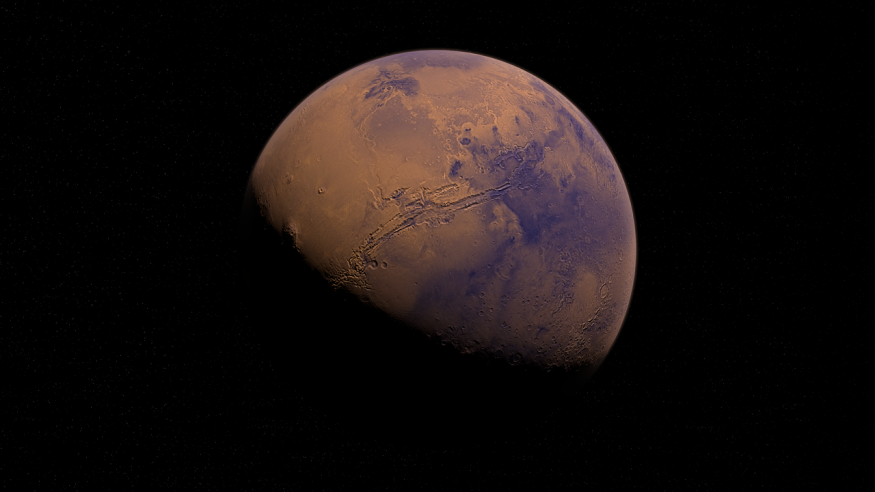Scientists think that Mars could be harboring a stockpile of precious gems. A team from Arizona State University and NASA-affiliated researchers found that the Gale Crater on the Red Planet is abundant with opals.
The press release from the university said that the presence of water-rich opal in fracture halos, which might be a valuable resource for human exploration, was independently confirmed by the team employing novel techniques to examine data from NASA's Curiosity rover and its neutron spectrometer Dynamic Albedo of Neutrons (DAN) on Mars.

The Last Water-Rich Area in Modern Gale Crater
According to the research, titled "On an Extensive Late Hydrologic Event in Gale Crater as Indicated by Water-Rich Fracture Halos" published in the Journal of Geophysical Research: Planets, the extensive subterranean fracture networks would have created environments that may have been more livable than those on the surface in terms of water content and radiation shielding.
Gale Crater is an impact basin with a gigantic, stratified mountain in the center where NASA deployed the Curiosity rover in 2012. As it served as the rover's home for a decade already, Curiosity has traveled throughout its surface and found light-toned rocks around fissures that crisscross certain areas of the martian terrain
The study suggests that Gale Crater's vast halo networks were one of, if not the last water-rich ecosystems throughout the modern Gale Crater. When circumstances on the surface were likely considerably harsher, this water-rich ecosystem in the subsurface would have also afforded better livable conditions.
They noticed a vast area of fracture halos reaching into the distance when they looked at the old pictures. The study team discovered something intriguing by using fresh techniques for assessing instrument data. These halos had a lot of silica and water in them, which was comparable to halos discovered much later in the expedition in quite other rock units.
Travis Gabriel, a research physicist for the US government, previously worked on research that used Chemistry and Camera (ChemCam), which is a laser-induced breakdown spectrometer on the rover to demonstrate if these halos were made of opal, which has historical significance for Gale Crater. Opal has a significant amount of water that allowed the DAN spectrometer to detect it.
Many years into the expedition, scientists established that these light-toned rocks were quite distinctive in comparison to anything the crew had seen before by examining drill cores retrieved at the Buckskin and Greenhorn drill sites.
Opal as a New Water Source?
Opals are formed when silica is dissolved in water, which makes the discovery intriguing. Futurism reports that subsurface regions of Gale Crater may have once harbored life from the harsh temperatures on the Martian surface before all of the water had disappeared on the Red Planet.
Gabriel said that it is reasonable to expect that these potentially habitable subsurface conditions may have extended to other regions of Gale Crater, and perhaps even to other parts of Mars, given the widespread fracture networks they discovered.
The precious gems may serve a more important purpose than just being an extraterrestrial bling in the future. Scientists said that silica and water can be separated relatively easily, which means it could serve as a crucial source of water for future astronauts.
They demonstrated in experiments that a three-foot section of a fractured halo could produce roughly 1.5 gallons of water on the top surface. That means the opal dates back to a different period of time in Martian history, which suggests unexpected regions of the Red Planet may also be teeming with water to this day.
RELATED ARTICLE : NASA Mars Curiosity Rover: Groundwater Modified 'Most Chemically Diverse Part' of Gale Crater
Check out more news and information on Mars in Science Times.











